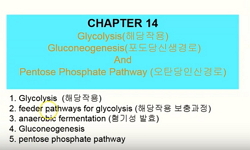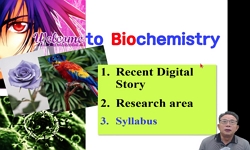<P><B>Abstract</B></P> <P>Fimasartan (FMS), an angiotensin II receptor antagonist, is metabolized to FMS S-oxide, FMS N-glucuronide, oxidative desulfurized FMS (BR-A-557), and hydroxy-n-butyl FMSs. The purpose of this st...
http://chineseinput.net/에서 pinyin(병음)방식으로 중국어를 변환할 수 있습니다.
변환된 중국어를 복사하여 사용하시면 됩니다.
- 中文 을 입력하시려면 zhongwen을 입력하시고 space를누르시면됩니다.
- 北京 을 입력하시려면 beijing을 입력하시고 space를 누르시면 됩니다.
https://www.riss.kr/link?id=A107463071
- 저자
- 발행기관
- 학술지명
- 권호사항
-
발행연도
2018
-
작성언어
-
- 주제어
-
등재정보
SCI,SCIE,SCOPUS
-
자료형태
학술저널
-
수록면
375-384(10쪽)
- 제공처
- 소장기관
-
0
상세조회 -
0
다운로드
부가정보
다국어 초록 (Multilingual Abstract)
<P><B>Abstract</B></P> <P>Fimasartan (FMS), an angiotensin II receptor antagonist, is metabolized to FMS S-oxide, FMS N-glucuronide, oxidative desulfurized FMS (BR-A-557), and hydroxy-n-butyl FMSs. The purpose of this study was to characterize enzymes involved in NADPH-dependent FMS metabolism using recombinant enzymes such as cytochrome P450 (CYP) and flavin-containing monooxygenase (FMO), as well as selective chemical inhibitors. The results showed that CYP, but not FMO, plays a major role in FMS metabolism. CYP2C9, CYP3A4, and CYP3A5 were involved in the formation of FMS S-oxide, which was further metabolized to BR-A-557 by CYP3A4/5. CYP2C9 played an exclusive role in n-butyl hydroxylation. The specificity constant (kcat/Km) values for S-oxidation by CYP2C9, CYP3A4, and CYP3A5 were 0.21, 0.34, and 0.19 μM-1∙min-1, respectively. The kcat/Km values of hydroxylation at the 1-, 2-/3-, and 4-n-butyl group in CYP2C9 were 0.0076, 0.041, and 0.035 μM-1∙min-1, respectively. The kcat and Km values provide information for the prediction of FMS metabolism in vivo. In addition, simultaneous determination of the FMS metabolites may be used to evaluate CYP2C9 and CYP3A4/5 activity.</P> <P><B>Highlights</B></P> <P> <UL> <LI> CYP but not FMO played the major role in the NADPH-dependent fimasartan (FMS) metabolism. </LI> <LI> CYP2C9, CYP3A4 and CYP3A5 were involved in the formation of FMS <I>S</I>-oxide, a major FMS metabolite. </LI> <LI> The value of the k<SUB>cat</SUB>/K<SUB>m</SUB> of <I>S</I>-oxidation by CYP2C9, CYP3A4 or CYP3A5 was 0.21, 0.34 or 0.19 μM<SUP>−1</SUP>·min<SUP>−1</SUP>, respectively. </LI> <LI> FMS <I>S</I>-oxide was further metabolized to oxidative desulfurated metabolite, BR-A-557 by CYP3A4/5. </LI> <LI> CYP2C9 played an exclusive role in the <I>n</I>-butyl hydroxylations of FMS. </LI> </UL> </P> <P><B>Graphical abstract</B></P> <P>[DISPLAY OMISSION]</P>







 ScienceON
ScienceON







